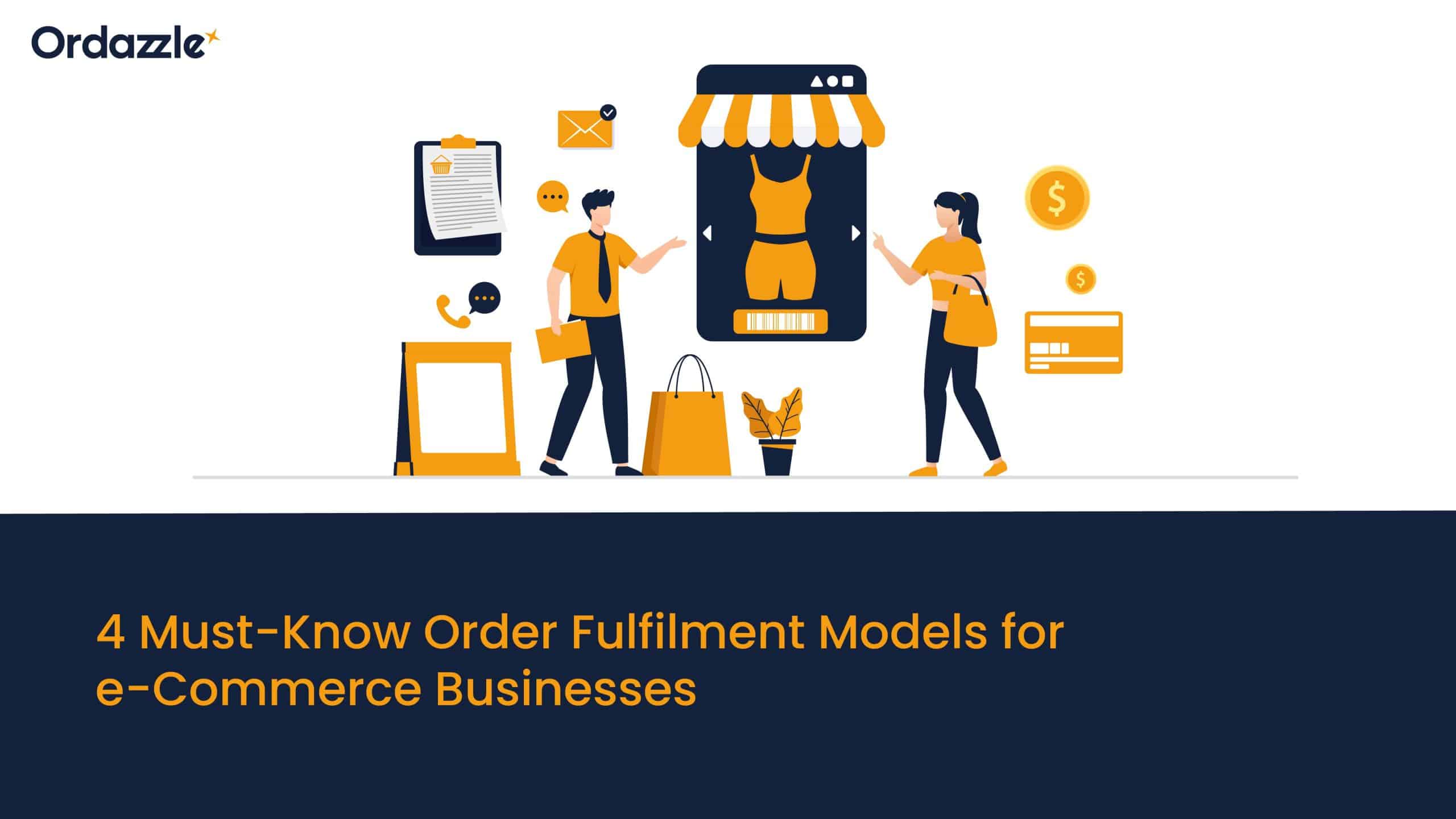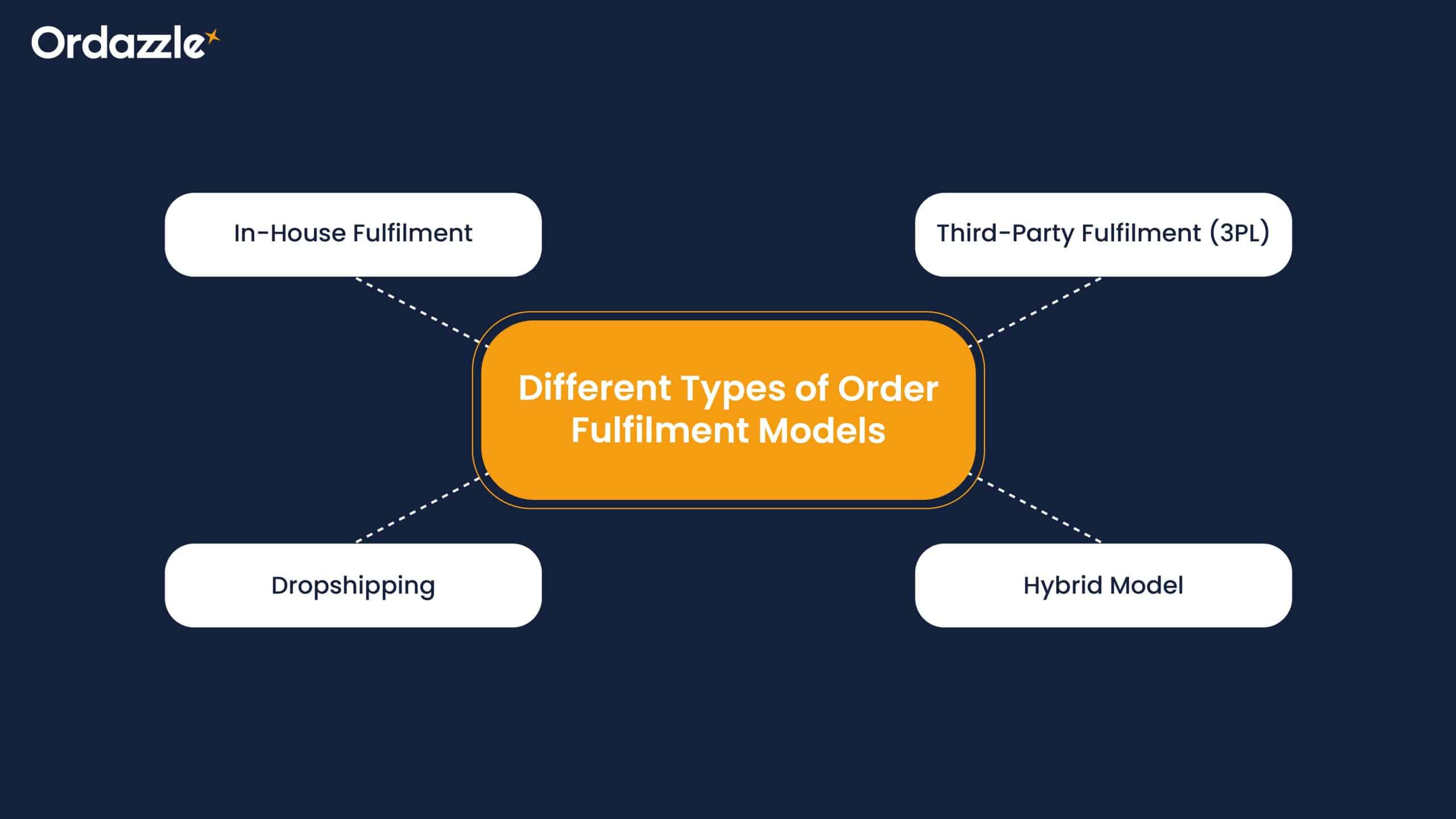
4 Must-Know Order Fulfilment Models for e-Commerce Businesses
Order fulfilment, by definition, is the method by which a company handles and processes a sales order as per the customer’s specifications.
But that understates its importance.
Customers today hold more power than ever, are more informed, and have higher expectations of brands they interact with, especially when it comes to how fast, conveniently, and safely they get their products.
So, no matter how stellar your online store’s design or how enticing your marketing campaigns are, a flimsy fulfilment operation can tarnish your brand’s reputation and bottom line.
e-Commerce managers know that once customers lose trust in shipping and delivery, it’s a tall order to win them back.
But how do we ensure that doesn’t happen? Well, in this article, we go over everything you need to know about order fulfilment, from what it is to its various models and how to choose the right one.
Read on.
What Does Order Fulfilment Cover?
The order fulfilment process, at its core, encompasses everything from receiving inventory to picking, packing, shipping, and handling returns. It’s a multi-stage journey that typically looks like this:
- Inventory Receiving & Storage: Before anything else, your products must arrive at a warehouse or storage facility. Here, you count, inspect, and log items in your system for transparent stock levels.
- Order Processing: Once a customer places an order, your system triggers a series of internal actions—picking from shelves, packing items securely, and printing shipping labels.
- Shipping & Delivery: This stage involves moving orders via a carrier (or multiple carriers) to ensure safe, timely delivery.
- Returns Management: If customers need to return or exchange items, a systematic reverse logistics process is essential to ensure a positive experience.
An efficient setup often integrates an online order management system or other technological tools to keep everything in sync. The crux of the matter is getting orders out correctly, on time, and with minimal hassle.
Common e-Commerce Order Fulfilment Challenges
No matter how well-orchestrated your approach, a few pain points are almost inevitable. Here are some that e-Commerce managers grapple with all too often:
1. Inventory Stockouts or Overstocks
Balancing inventory is tricky. Too little stock, and you risk frustrating customers with backorders. Too much, and your carrying costs shoot through the roof.
2. Complex Logistics & Shipping Costs
Shipping is often one of the biggest expenses. Fluctuating rates, dimensional weight calculations, and international regulations can be a headache.
Also Read: The Role of API Management in Driving Indian E-commerce Digital Transformation
3. Demand Fluctuations
Seasonal spikes or flash sale events can overload fulfilment operations. On the flip side, slow seasons may leave you with unused warehouse space.
4. Returns & Exchanges
Mishandling returns can chip away at profits and customer satisfaction. You need a well-thought-out system to handle items that come back.
Keeping your eye on these potential pitfalls helps you pivot quickly and maintain a smooth customer experience.
Types of Order Fulfilment Models

1. In-House Fulfilment
This model places every step—from inventory management to packaging—squarely under your own roof. It’s ideal if you prefer full visibility and want to maintain a personal touch in packing or branding.
The downside? It can be resource-intensive. You’ll need space, staff, and the right technology to keep operations efficient. Still, if you like calling the shots and have consistent order volume, in-house can be a robust solution.
2. Third-Party Fulfilment (3PL)
Handing off your order packing and shipping to a 3PL partner can be a game-changer if you lack the space or manpower to handle fulfilment independently. These external providers specialise in logistics, often securing bulk shipping discounts.
The main trade-off is less oversight. If the 3PL drops the ball, your customers will be pointing fingers at you, not them.
3. Dropshipping
This model has earned a reputation as the fast track for entrepreneurs who want to test product ideas or avoid holding large inventories. You list the products, but your supplier stores the stock and ships directly to the customer once an order is placed.
The advantages are low overhead and reduced risk. On the flip side, you sacrifice control over packaging, shipping times, and, occasionally, product quality.
4. Hybrid Model
This approach is a mix-and-match of the above. Perhaps you handle top-selling products in-house for a personalised touch while dropshipping or using a 3PL for niche or bulky items.
This method offers flexibility, letting you tailor strategies to product lines or regional demands. However, coordinating multiple fulfilment streams can become complex if not managed carefully.
Also Read: 5 Tips For Right Inventory Control Management
How to Choose an Order Fulfilment Model For e-Commerce Business
Picking from the types of order fulfilment isn’t merely about preference; it’s about alignment with your business goals, budget, and capacity.
Consider the following when deciding:
A. Order Volume & Fluctuations
a. If you have stable, predictable demand, in-house might make sense.
b. If you see large seasonal spikes, 3PL or dropshipping could offer scalability.
B. Budget & Resources
a. In-house models require upfront costs for real estate, equipment, and workforce.
b. Outsourcing spares you much of the capital investment but adds ongoing service fees.
C. Geographical Reach
a. A 3PL with global warehouses can speed up delivery if you’re targeting international markets.
b. Dropshipping can also work for wider coverage, though shipping times may be longer if suppliers are overseas.
D. Branding & Customer Experience
a. Need specialised packaging or inserts? In-house or hybrid models offer more control.
b. If personal touches aren’t a priority, 3PL or dropshipping might suffice.
E. Technology & Data
a. Whichever model you choose, integrate an order management solution for real-time tracking, inventory updates, and performance analytics. Smooth data flow is key.
Ultimately, weigh your internal capabilities against what external partners can offer. The right choice will match your operational strengths and free you to focus on growth.
Fulfill Your Business Goals with Ordazzle’s Order Management Solution
Choosing the right fulfilment path can feel like threading a needle—there’s a lot at stake, and every detail matters. Regardless of which route you take, a central platform that keeps track of orders, inventory, and shipping details is indispensable.
That’s where an e-Commerce solutions company, like Ordazzle comes into the picture. With its robust order management solution featuring end-to-end oversight, you can consolidate all your workflows under one digital roof. And that means fewer slip-ups, faster shipping, and happier customers.
When you partner technology with the Order Fulfilment model best suited to your brand, you set yourself up for a winning combination. After all, exceeding customer expectations begins long before the package arrives—it starts with a plan that expertly navigates each step from click to doorstep.
If you’re ready to tighten your operations, enhance your customer journey, and scale seamlessly, now’s the perfect time to explore how Ordazzle can elevate your fulfilment game.
You’ll find that once the logistics are handled like clockwork, you free up the headspace to do what you do best: grow your business.
Connect with us to get started today!



